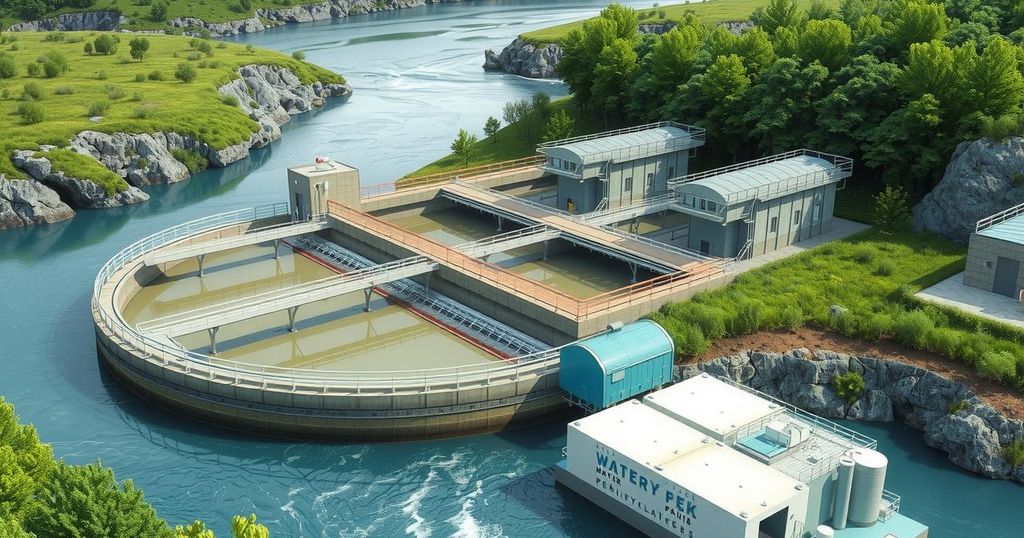Anacortes, Washington: Addressing Climate Change Through Water Treatment Plant Rebuild
Anacortes, Washington, is rebuilding its vulnerable water treatment plant to enhance its resilience against climate change. The facility will increase capacity, incorporate protective design strategies, and utilize EPA resources to mitigate risks from future climate impacts. This initiative exemplifies a proactive response to identified vulnerabilities in community water infrastructure.
The city of Anacortes, Washington, acknowledged vulnerabilities in its water treatment plant located along the Skagit River, which serves approximately 56,000 residents. In 2003, it became evident that the facility required an upgrade from its original capacity of 21.4 million gallons per day (mgd) to 31.5 mgd. Although moving the plant out of the floodplain was analyzed in 2008, officials opted to rebuild it on-site due to cost constraints. This decision demands careful consideration of climate projections and the incorporation of adaptation strategies.
In collaboration with non-profit organizations, Anacortes city officials assessed the plant’s vulnerabilities based on the best available climate science. Factors evaluated included increased storm frequency and intensity, saltwater intrusion, and higher sedimentation levels. Projections extended through the 2080s specifically for the Skagit River area indicated an expanded 100-year floodplain, a significant rise in sediment loads, and the potential migration of the saltwater wedge as a result of sea level rise.
To mitigate the risks associated with flooding, the plant’s design included several protective measures. These measures encompassed minimizing penetration below the current 100-year flood elevation, elevating critical electrical equipment, applying waterproofing techniques for installations below 40 feet, and designing surrounding ring dikes for enhanced flood protection. The total estimated cost of this reconstruction is $56 million, with enhanced design elements aimed at accommodating increased service demand and adapting to climate change.
The Environmental Protection Agency (EPA) offers several tools to aid utilities in understanding vulnerabilities and developing adaptation strategies. The Coastal Inundation Toolkit helps utilities simulate potential sea level rise and storm surge scenarios, while the Creating Resilient Water Utilities Adaptation Strategies Guide offers low-cost adaptation strategy recommendations. The Climate Resilience Evaluation and Awareness Tool (CREAT) supports utilities in conducting vulnerability assessments, either risk-based or scenario-based, to fill information gaps and direct future research.
Moreover, communities across the nation have undertaken similar initiatives to address climate vulnerabilities in water utilities. For example, Manchester-by-the-Sea in Massachusetts assessed climate vulnerability, Iowa City has enacted measures to close vulnerable facilities, and Washington, D.C. is employing green infrastructure to manage stormwater effectively. These case studies highlight the proactive steps being taken to ensure water utility resilience in the face of climate change.
In conclusion, Anacortes’ comprehensive approach to rebuilding its water treatment plant focuses on addressing both current and projected climate risks. By utilizing best practices in design, collaborating with reputable organizations, and leveraging EPA resources, Anacortes aims to enhance the long-term resilience of its water infrastructure against climate change impacts.
The city of Anacortes, Washington, has undertaken significant measures to rebuild its water treatment plant in response to climate change threats. In collaboration with experts, the city has identified key vulnerabilities and implemented protective strategies as part of the facility’s design. Utilizing EPA tools and learning from similar cases across the nation, Anacortes aims to ensure that its water utility remains resilient and can meet future demands and climate challenges effectively.
Original Source: www.epa.gov




Post Comment